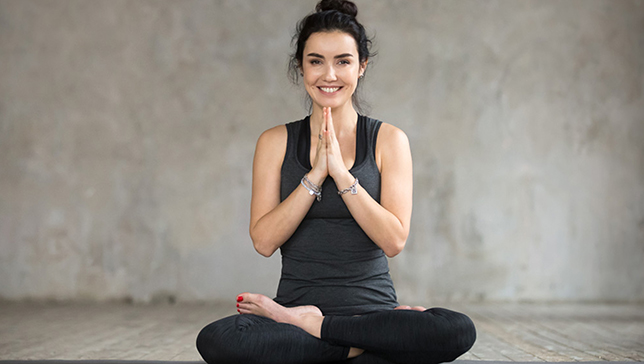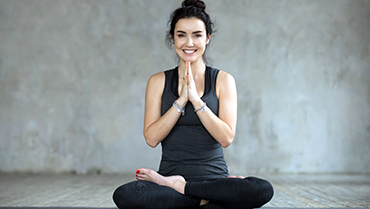Lotus Pose - Padmasana

Contents
Lotus Pose is perhaps the most recognized yoga pose today, even by people who don’t practice yoga. It is considered by many to be the “classic” yoga pose. Lotus is often used for meditation, and many yoga classes begin or end with this pose. However, Lotus Pose is an advanced pose that is not suitable for those who are new to yoga. Be sure to try alternative seated positions, such as Easy Pose (Sukhasana), if you are a beginner or if you have less flexibility in your lower body.
The Sanskrit word for this pose, “Padmasana” (pahd-MAHS-uh-nuh), is named after the lotus flower, or “padma.” In the full position, your legs become like the petals of a lotus flower, gently dropping open.
Pose Detail
- Difficulty: Advanced
- By Type: Hip Opening Yoga Poses, Meditation Yoga Poses, Restorative Yoga Poses
- Body Position: Seated Yoga Poses
- By Benefit: Yoga Poses For Sciatica
Step-by-Step Instructions
Benefits and Contraindications
Opens up the hips
Stretches the ankles and knees
Calms the brain
Increases awareness and attentiveness
Keeps the spine straight
Helps develop good posture
Eases menstrual discomfort and sciatica
Helps keeps joints and ligaments flexible
Stimulates the spine, pelvis, abdomen, and bladder
Restores energy levels
Avoid or modify if you have any knee pain, knee injuries (particularly knee ligament injuries), knee arthritis, knee replacement, or any other knee limitations or concerns.
Avoid, be cautious, or modify if you have hip arthritis, pain, injury, or replacement.
Don’t force your body into the pose; instead, move slowly and mindfully in and out of the pose.
If you have any pain with the pose or other limitations, try pose variations and modifications, or visualize doing the full expression of the pose in any position. Always ask your health care team if you are unsure of what you can and cannot do with your particular health concerns. Also, seek a qualified yoga instructor or yoga therapist to help you individually adapt the pose for safety.
Photo poses in different angles

Modification
First become comfortable with Half Lotus. You can also prepare with Bound Angle Pose, Hero Pose, and Head-to-Knee Pose. Continue to practice regularly and your hips will open more over time.
Tips
If Padmasana is not comfortable for you, try some other yoga poses to prepare for it. Easy Pose (Sukhasana) is a great way to build a stable base for the pose with less stretch on the hips.
Ardha padmasana (literally meaning half lotus) requires you to only place one foot in the opposite hip crease at a time. Again, another great way to build muscle memory and prepare to reach the full Padmasana safely and comfortably!
It may be tempting to try to enter straight into this pose without warm-up. This depends on your hip flexibility. Be sure to warm up the hips before you begin, and avoid this posture and its variations if you have hip, knee or ankle injuries.
Frequently Asked Questions
Variations
- Blossoming Lotus Pose
- Bound Lotus Pose
- Elevated Lotus Pose
- Half Lotus Pose
- Half Lotus Pose Raised Arms
- Half Lotus Pose Side Bend
- Half Lotus Pose Twist Raised Arms
- Upward Lotus Pose
- Half Lotus Tip Toe Pose Hands Blocks
- Bound Lotus Pose On Stomach
- Cock Pose
Top Preparatory Poses
- Cock Pose
- Cow Face Pose with Eagle Arms
- Half Bound Lotus Forward Fold
- Wide Angle Seated Forward Bend Pose
Top Follow-Up Poses
- Seated Forward Bend Pose
- Corpse Pose